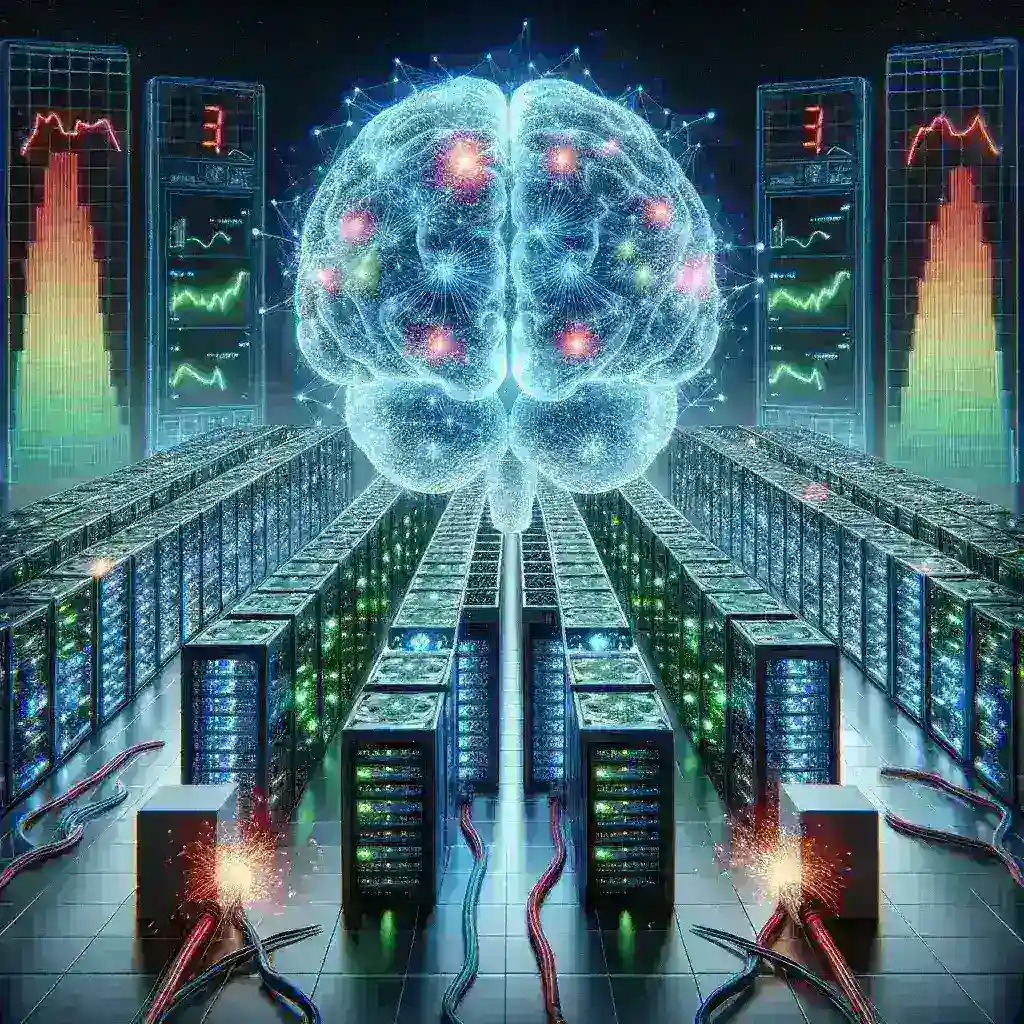Introduction
As artificial intelligence (AI) continues to evolve and penetrate various sectors, its implementation has triggered an unprecedented demand for computational resources. This surge in AI workloads is not just a trend; it’s reshaping the landscape of data centers worldwide. With the increasing complexity of AI models and the vast amounts of data they require, data center power demands are reaching alarming levels. In this article, we will delve into the reasons behind this phenomenon, exploring historical context, expert opinions, and future predictions.
The Rise of AI Workloads
AI workloads encompass a variety of processes, from machine learning algorithms to deep learning neural networks. The complexities of these models often require significantly more processing power than traditional workloads. As industries strive to harness the potential of AI to drive innovation, the need for robust computational resources has increased dramatically.
Historical Context
To understand the current strain on data center power demands, it is essential to consider the evolution of AI technology. In the early days, AI systems operated on limited datasets and simpler algorithms, which required less computational power. However, as the technology has advanced, so too has the need for advanced hardware capable of managing larger datasets and more complex computations. For instance, the introduction of GPUs (Graphics Processing Units) revolutionized AI processing by enabling parallel computing, drastically increasing processing capabilities.
Current State of Data Center Power Demands
According to recent statistics, data centers globally consume about 1-2% of the total electricity supply, with projections indicating this could rise to 8% by 2030 if current trends continue. The majority of this energy is consumed by AI workloads, which are inherently resource-intensive. As organizations adopt AI technologies, the power requirements of data centers are expected to grow exponentially.
Factors Contributing to Increased Power Demands
- Model Complexity: State-of-the-art AI models, such as GPT-4 and BERT, consist of billions of parameters, demanding more computational resources.
- Data Volume: The amount of data processed by AI systems is increasing. Training AI models often requires massive datasets, leading to higher energy consumption.
- Real-Time Processing: Businesses now require real-time analytics from their AI systems, necessitating constant processing power and, subsequently, higher energy consumption.
Implications of Increased Power Demands
As data center power demands escalate, various implications arise, impacting not only operational costs but also environmental sustainability. Energy-intensive operations can lead to higher carbon footprints, undermining sustainability efforts across industries.
Economic Impacts
The rising energy costs associated with data center operations can significantly affect an organization’s bottom line. As electricity prices fluctuate, businesses must prepare for the financial implications of increased power demands. This leads to an urgent need for enhanced energy efficiency practices and investments in renewable energy sources.
Environmental Considerations
With the increased focus on climate change and sustainability, the energy consumption of data centers has come under scrutiny. A significant portion of the world’s energy still comes from non-renewable sources, contributing to greenhouse gas emissions. Organizations must balance their AI ambitions with environmental responsibilities.
Renewable Energy Solutions
One way to mitigate the environmental impact of AI workloads is through the adoption of renewable energy sources. By transitioning data centers to solar, wind, or hydroelectric power, organizations can reduce their carbon emissions while meeting energy demands.
Strategies for Managing Power Demands
Despite the challenges posed by increasing power demands, several strategies can help organizations optimize energy consumption within their data centers.
Energy Efficiency Technologies
Implementing energy-efficient technologies is essential for managing power demands. Innovations such as AI-driven energy management systems can optimize cooling and power allocation, minimizing waste. Additionally, utilizing server virtualization enables multiple workloads to run on a single physical server, improving resource utilization.
Hardware Optimization
Investing in energy-efficient hardware can lead to substantial power savings. Modern processors and GPUs are designed with energy efficiency in mind, allowing organizations to achieve better performance without significantly increasing power consumption.
Cloud Computing Resources
Utilizing cloud computing resources can also help organizations balance their AI workloads and power demands. Cloud providers often operate large data centers optimized for energy efficiency, allowing businesses to leverage shared resources without the overhead of maintaining physical infrastructure.
The Future of AI Workloads and Power Demands
As AI technology continues to advance, the power demands of data centers are expected to rise further. However, organizations can take proactive measures to prepare for this shift.
Emerging Technologies
The advent of new technologies, such as quantum computing, promises to revolutionize how we compute, potentially addressing some of the energy consumption challenges associated with AI workloads. Although still in their infancy, these technologies could provide solutions for future power demands.
Collaborative Efforts
Industry collaboration will play a crucial role in addressing the challenges posed by rising power demands. By sharing best practices, developing energy-efficient technologies, and investing in research, organizations can work together to find sustainable solutions.
Conclusion
The strain that AI workloads place on data center power demands is a multifaceted issue that requires immediate attention. As we look to the future, balancing the need for advanced AI capabilities with sustainability and efficiency must be a priority for organizations worldwide. By embracing innovative technologies, optimizing existing resources, and committing to renewable energy, businesses can navigate the challenges posed by increasing power demands while continuing to leverage the transformative potential of AI.




